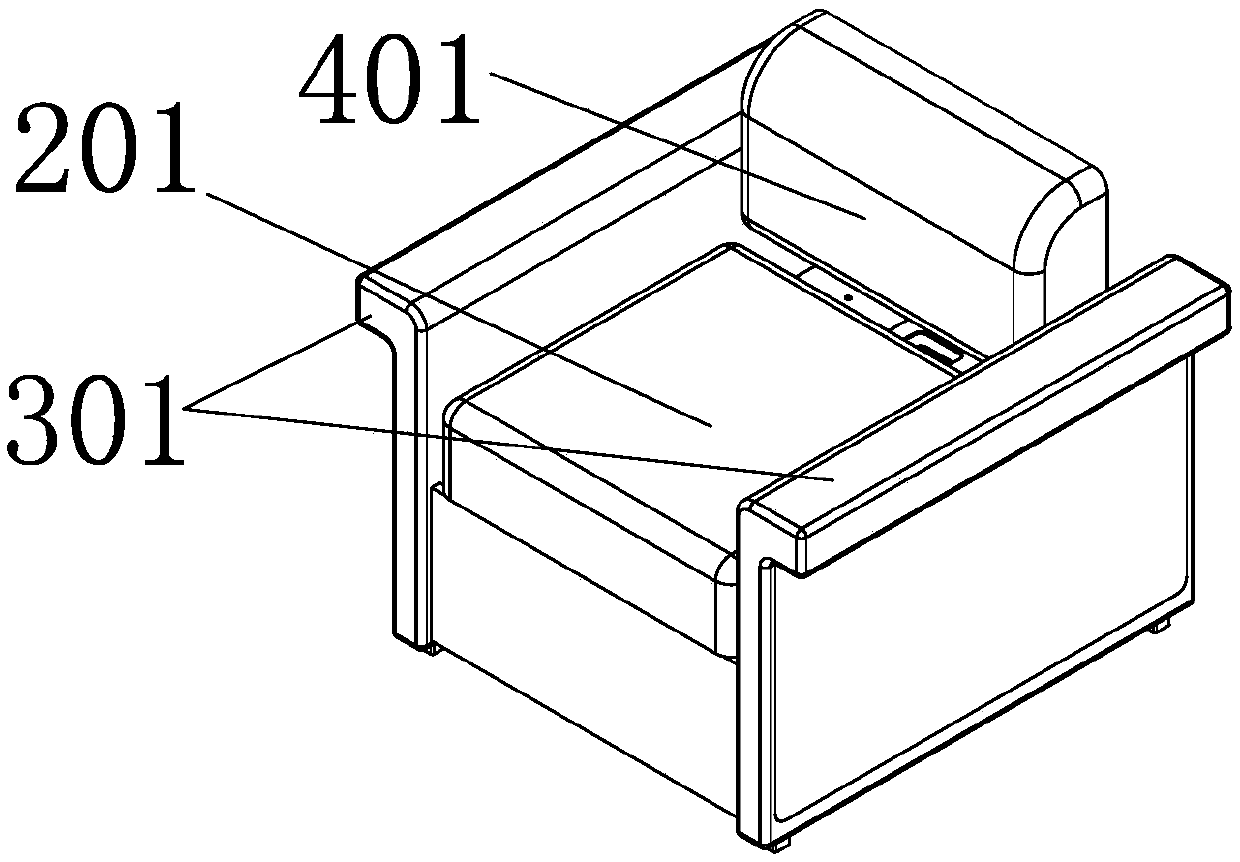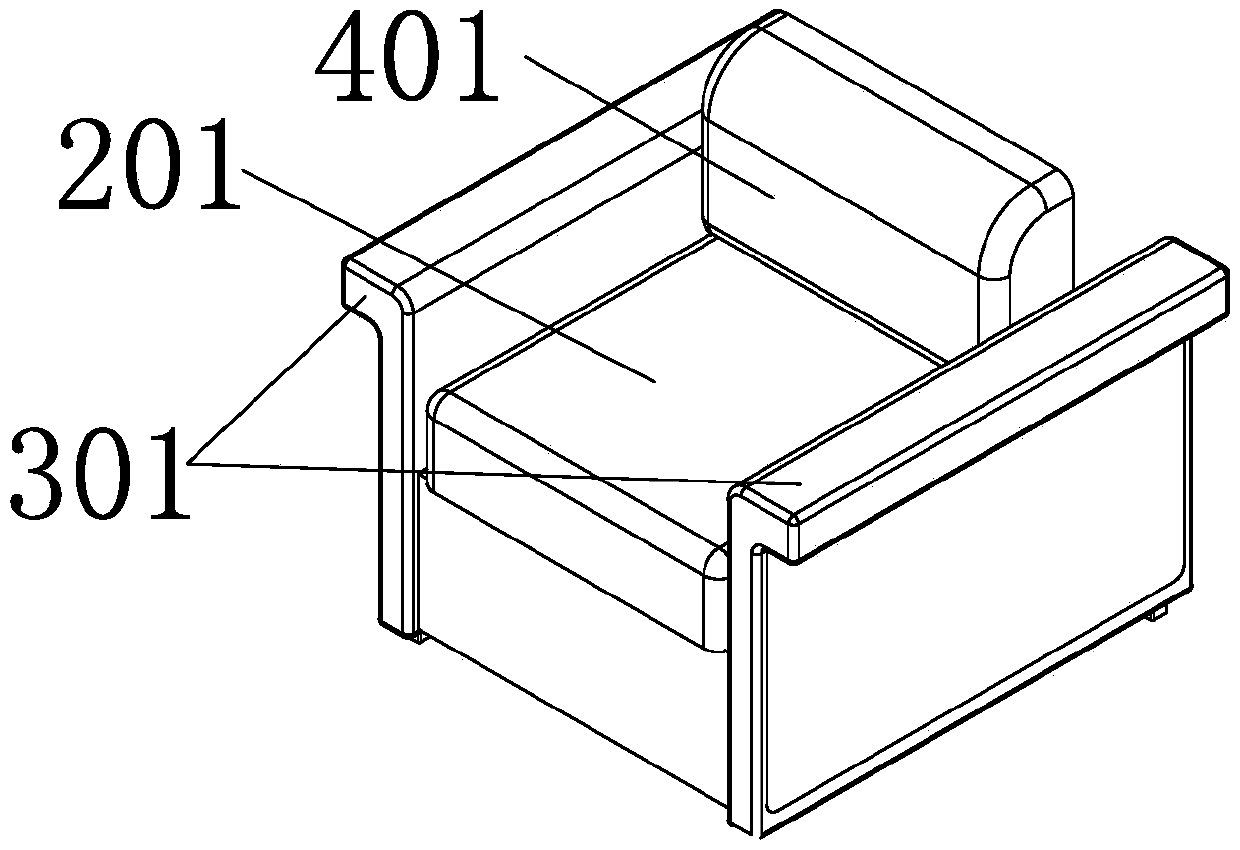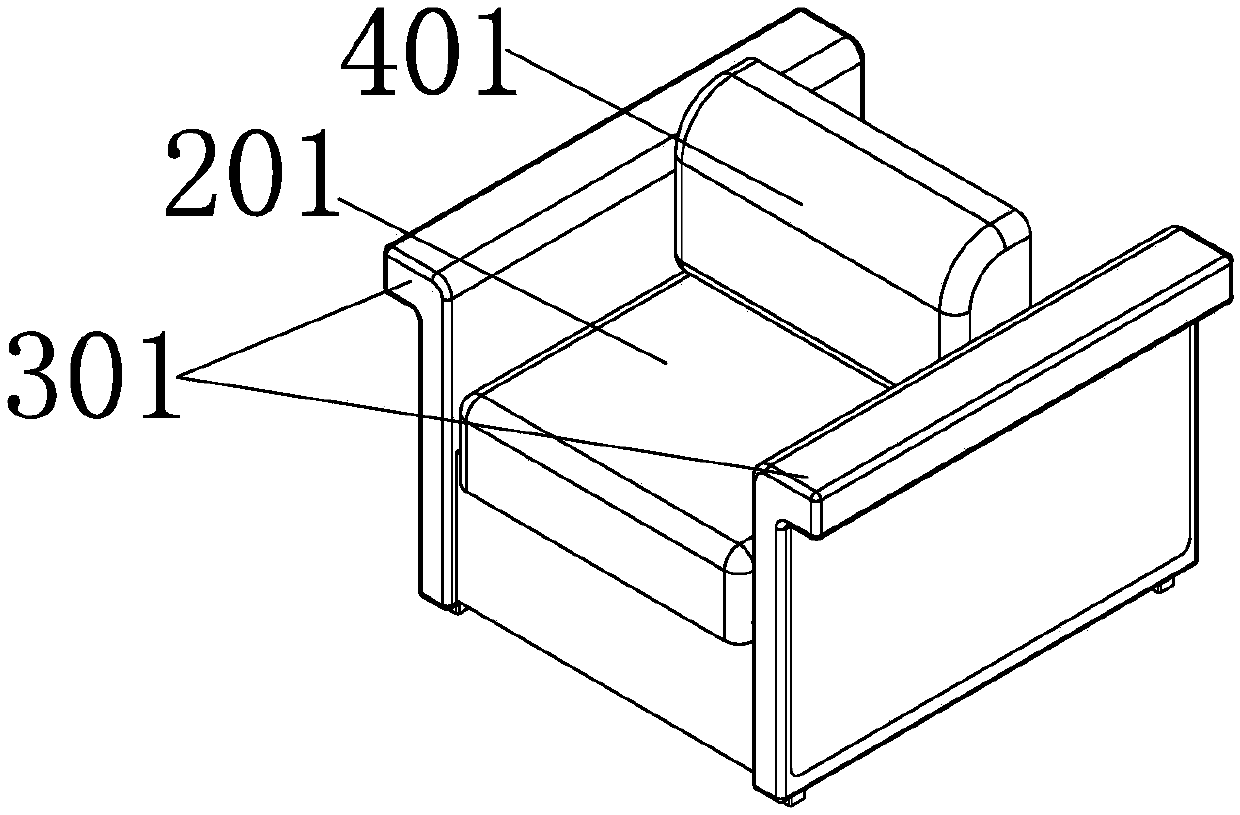Seat waist synchronous linkage device for seat and seat
A technology of synchronous linkage and seat waist, which is applied in home appliances, other seat furniture, applications, etc., can solve the problem that the seat lumbar support cannot reach the waist, and achieve the effect of simple structure, which is conducive to modular production and popularization and application
- Summary
- Abstract
- Description
- Claims
- Application Information
AI Technical Summary
Problems solved by technology
Method used
Image
Examples
Embodiment 1
[0083] Embodiment 1: First, define the reference orientations of the components of the present invention. In the present invention, when the seat is installed and used normally, the front of the seat is the front end and the head, and the rear of the seat, including the position of the seat lumbar, is the rear end, tail.
[0084] The seat waist synchronous linkage device for the seat of the present embodiment, such as Figure 7-22 shown, including:
[0085] The base 1 is used to support the whole device; the base 1 is fixed.
[0086] The seat frame 2 is used to configure the seat cushion, and the seat frame is arranged above the base;
[0087] The front and rear connecting rods 3a and 3b are all symmetrically arranged on the left and right sides of the base 1, wherein the two ends of the front connecting rod 3a are respectively hinged with the front end of the seat frame 2 and the front end of the base 1, and the two ends of the rear connecting rod 3b are respectively connec...
Embodiment 2
[0105] Example 2: Figure 23-27 Another embodiment of the device of the present invention is illustrated. The difference from Embodiment 1 is that the lumbar support 4 is slidably connected to the base 1, and the drive shaft 8c and the limit shaft 8d are all on the base 1. The connecting rod of this embodiment Group 8 is specifically 4 connecting rods.
[0106] In specific applications, that is, when the human body is sitting, the seat frame 2 in this embodiment moves down after receiving the pressure of the human body, driving the front and rear connecting rods 3a, 3b hinged with the front and rear ends of the seat frame 2, and the front and rear connections During the downward movement of the rods 3a and 3b, the connecting rod group 8 is squeezed to make it stretch and expand, and the connecting rod group 8 stretches through the drive shaft 8c to transmit the pulling force to the transverse support 4b of the lumbar support 4, and the transverse support 4b of the lumbar suppo...
PUM
 Login to View More
Login to View More Abstract
Description
Claims
Application Information
 Login to View More
Login to View More - R&D
- Intellectual Property
- Life Sciences
- Materials
- Tech Scout
- Unparalleled Data Quality
- Higher Quality Content
- 60% Fewer Hallucinations
Browse by: Latest US Patents, China's latest patents, Technical Efficacy Thesaurus, Application Domain, Technology Topic, Popular Technical Reports.
© 2025 PatSnap. All rights reserved.Legal|Privacy policy|Modern Slavery Act Transparency Statement|Sitemap|About US| Contact US: help@patsnap.com



